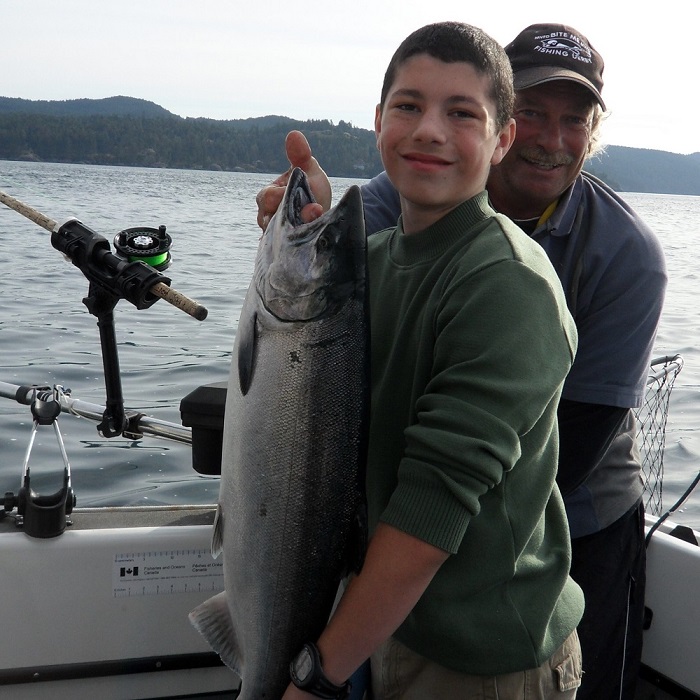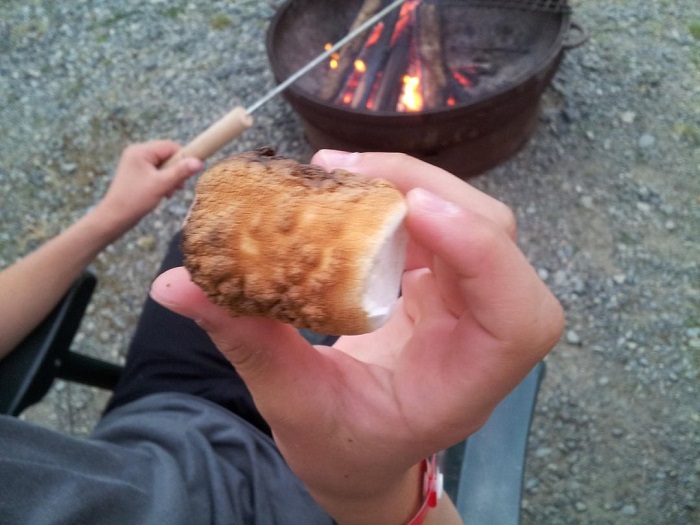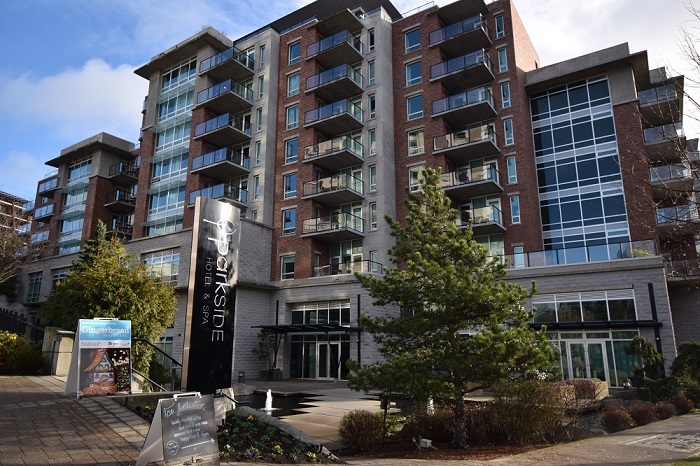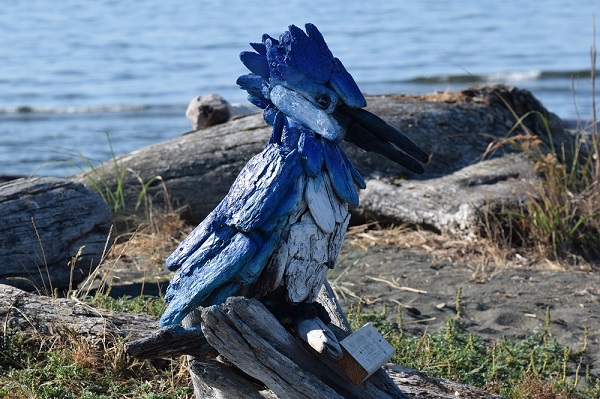Vancouver
Island Wildlife Viewing Guide
Discover the best times and locations for Vancouver Island wildlife viewing.
Vancouver Island, situated off the coast of British Columbia in Canada is renowned for its stunning natural beauty and abundant wildlife. From bears to whales, salmon, eagles and more, the island offers a unique opportunity to witness these creatures in their natural habitats. And one of the most common questions we get from people planning their visit, is when is the best time of year, and what is the best location for viewing these animals in the wild.
To help answer your questions, I have compiled a comprehensive guide to experiencing the best of Vancouver Island wildlife.
Disclaimer: This post includes affiliate links and I will be compensated if you make a purchase after clicking one of my links. Learn more here.
As the creator of MustBeVictoria.com, I am always on the lookout for the best tools and resources to enhance your travel experiences. Click here to learn why I wholeheartedly recommend using the Viator and Skyscanner booking platforms.
Bears
Best Time: May to October
Best Locations:
Clayoquot Sound (Tofino)
Tofino is famous for bear-watching tours that explore the remote inlets of Clayoquot Sound. Tours often take visitors to estuaries and river mouths where bears come to feed on spawning salmon or they can be seen foraging along the shoreline at low tide. My husband and I experienced one of these tours that also included Hot Springs Cove and we highly recommend it. Jamies Whaling Station is the tour company we used.
Campbell River
A hub for wildlife tours, Campbell River offers boat tours that take visitors to see black bears along the shores of the Discovery Islands and nearby inlets as well as Grizzlies.
Port McNeill & Telegraph Cove
Both are excellent jumping-off points for bear-viewing tours. Tours often venture into nearby rivers and coves where black bears can be spotted hunting for salmon.
Ucluelet
Like Tofino, Ucluelet offers bear-watching boat tours along the west coast. Bears often search for food along the rugged coastline. Jamie's also offers bear watching tours out of Ucluelet.
Strathcona Provincial Park
Vancouver Island's largest park is a wilderness haven where black bears are frequently seen, especially in more remote areas. Unlike the other locations where bear watching is generally done on a boat from a safe distance, bear encounters at Strathcona are more likely to be on foot while hikiing. Planning and preparation before you visit is essential. Read more about Vancouver Island wildlife here.
Pacific Rim National Park Reserve
The park’s beaches and forests are prime bear habitat, and while hiking or driving, visitors may spot bears foraging along the edge of the forest.
Gold River
Situated in a mountainous area, Gold River is another spot where black bears are often seen. Bear tours also run from here to remote inlets.
Sooke Region
Located west of Victoria, the Sooke region provides excellent opportunities for bear sightings, particularly along its forested trails and shorelines.
Whales
Best Time: April to October (peak season is June to September)
Best Locations:
Victoria
The southern tip of Vancouver Island is an excellent place for orca whale watching. Victoria and nearby areas offer tours that often guarantee sightings during the peak season. Read more about whale watching here.
Tofino and Ucluelet
These coastal towns also provide opportunities to see migrating gray whales, humpback whales and occasionally even blue whales. Whale watching tours depart regularly from both locations.
Campbell River
Known as the "Salmon Capital of the World," Campbell River is a hub for both salmon fishing and whale watching. Tours here focus on orcas, humpbacks and minke whales.
Salmon
Salmon fishing and observing salmon up close during the spawning season are two very popular Vancouver Island wildlife experiences.
Salmon Fishing
Salmon fishing seasons and regulations vary by species, location and method of fishing (saltwater or freshwater). The regulations are managed by the Fisheries and Oceans Canada (DFO), which regularly updates fishing regulations to conserve salmon stocks. Here’s a general guide:
Chinook (King) Salmon:
- Saltwater Fishing Season: Typically open year-round in many marine areas, but with specific restrictions on size, daily catch limits and closures in certain areas to protect stocks.
- Freshwater Fishing Season: Typically open during late summer to fall, with runs peaking from August to October in rivers such as the Campbell and Cowichan.
Coho (Silver) Salmon:
- Saltwater Fishing Season: Open in various marine areas from early summer through late fall. Some areas allow retention of hatchery coho only, while wild coho must be released.
- Freshwater Fishing Season: Generally, the season runs from September to November during their spawning migration.
Sockeye Salmon:
- Saltwater Fishing Season: The season is highly regulated due to conservation concerns, with openings depending on annual stock assessments.
- Freshwater Fishing Season: Open in some rivers during peak runs from July to October, but often subject to closures.
Pink Salmon:
- Saltwater Fishing Season: Open during odd-numbered years (e.g., 2023, 2025), typically from July to September when the pink salmon runs are strongest.
- Freshwater Fishing Season: Fishing is allowed in rivers with pink salmon runs during the same period, especially in the Alberni Inlet and Campbell River.
Chum Salmon:
- Saltwater Fishing Season: Open from fall to early winter (September to December).
- Freshwater Fishing Season: Open in several rivers during their spawning migration from October to December.
Key Regulations to Note:
- Licenses: You must have a valid tidal waters sport fishing license for saltwater fishing and a freshwater fishing license for rivers and lakes. A separate salmon conservation stamp is required to keep any salmon you catch.
- Catch Limits: Daily catch limits and retention rules vary by species and location. For example, you may be allowed to keep up to two chinook salmon per day in certain areas, but this varies.
- Size Limits: Some species, like chinook salmon, have minimum and maximum size limits.
- Barbless Hooks: In many areas, using barbless hooks is mandatory to make catch-and-release fishing easier and more humane.
- Closed Areas: Certain rivers and marine areas may be closed to salmon fishing during specific times to protect spawning salmon or vulnerable populations. Always check for in-season closures and area-specific regulations on the DFO website or local notices.
Your fishing guide will help you identify what you can and can not keep.
The DFO publishes regular updates and fishing regulations. It’s crucial to check their official website or local fishing shops for the most current information, as regulations can change based on conservation needs.
Salmon Spawning Observation
The different species of Pacific Salmon on Vancouver Island can be observed at various times of the year. Here are the best viewing times of the five main types of salmon:
Chinook (King) Salmon - The largest species of Pacific salmon, often weighing over 30 pounds. They have a rich, high-fat content and are highly prized by anglers.
- Best Viewing Time: Spring to fall, with peak spawning runs from mid-August to October.
Coho (Silver) Salmon - Known for their acrobatic jumps and aggressive behaviour, coho salmon are smaller than chinook but still offer great fishing and wildlife viewing opportunities.
- Best Viewing Time: September to November.
Sockeye (Red) Salmon - These salmon have a striking red color during their spawning phase. They are prized for their flavour and are commonly used in smoked or canned products.
- Best Viewing Time: July to October, depending on the river system.
Pink (Humpback) Salmon - The smallest and most abundant of the Pacific salmon, pink salmon return in massive numbers to spawn in odd-numbered years on Vancouver Island.
- Best Viewing Time: Late summer, typically August to early September.
Chum (Dog) Salmon - Chum salmon are known for their distinctive patterns of purple and green on their bodies as they near spawning. They’re less sought after for sport fishing but play a crucial role in the ecosystem. These are the most abundant species found at Goldstream Provincial Park.
- Best Viewing Time: October to December.
Best Locations for Fishing and Viewing
Campbell River
As mentioned, Campbell River is famous for its salmon runs. The peak season varies by species with different runs occurring throughout the summer and into early fall. See above for more information on the various species and run times.
Gold River
Located in central Vancouver Island, Gold River and its surrounding areas are known for their excellent salmon fishing and viewing opportunities.
Goldstream Provincial Park
Located just outside Greater Victoria, Goldstream is an excellent location for up-close viewing of the annual fall salmon run from early October until mid-December.There is no "quiet time" to visit Goldstream as it is popular with schools for class trips during the week and for families and visitors on the weekends. My best advice is to get there early.
Stamp River
Near Port Alberni, the Stamp River is particularly famous for its fall salmon runs, which attract not only anglers but also eagles and bears.
Eagles
Best Time: November to February (during the salmon spawning season)
Best Locations:
Gold River, Campbell River and Goldstream Provincial Park
These locations see an influx of eagles during the salmon spawning season. Eagles gather to feast on the salmon carcasses, providing excellent opportunities for viewing and photography.
Comox Valley
The estuaries and rivers in the Comox Valley attract eagles during the winter months as well, offering a chance to see these majestic birds up close.
Tips for Vancouver Island Wildlife Viewing
- Book Tours in Advance: Especially during peak seasons, it’s advisable to book wildlife viewing tours in advance to secure your spot.
- Respect Wildlife and Their Habitat: Always observe from a safe distance and follow guidelines provided by tour operators to ensure the safety of both yourself and the animals.
- Pack Accordingly: Weather on Vancouver Island can be unpredictable, so dress in layers and bring waterproof gear, especially on boat tours.
- Be Patient: Wildlife sightings are not guaranteed, but patience often pays off. Guides and locals often have insider knowledge on the best times and places to see specific animals.
There’s a perfect spot and season for experiencing all Vancouver Island wildlife in their natural habitats. The key is to decide what is important to you and plan your trip accordingly.
Recent Articles
-
Vancouver Island Wildlife Viewing Times and Locations
Sep 16, 24 06:42 PM
Discover the best times and places to see wildlife in their natural habitat with our Vancouver Island Wildlife Viewing guide. -
Private Campgrounds on Vancouver Island
Aug 13, 24 05:23 PM
Your one-stop listing of all private campgrounds on Vancouver Island. -
Where to Stay in Victoria, BC: A Comprehensive Guide
Jul 10, 24 12:42 PM
Choosing the right place to stay can significantly enhance your experience. This guide provides tips and ideas to help you decide where to stay in Victoria.






